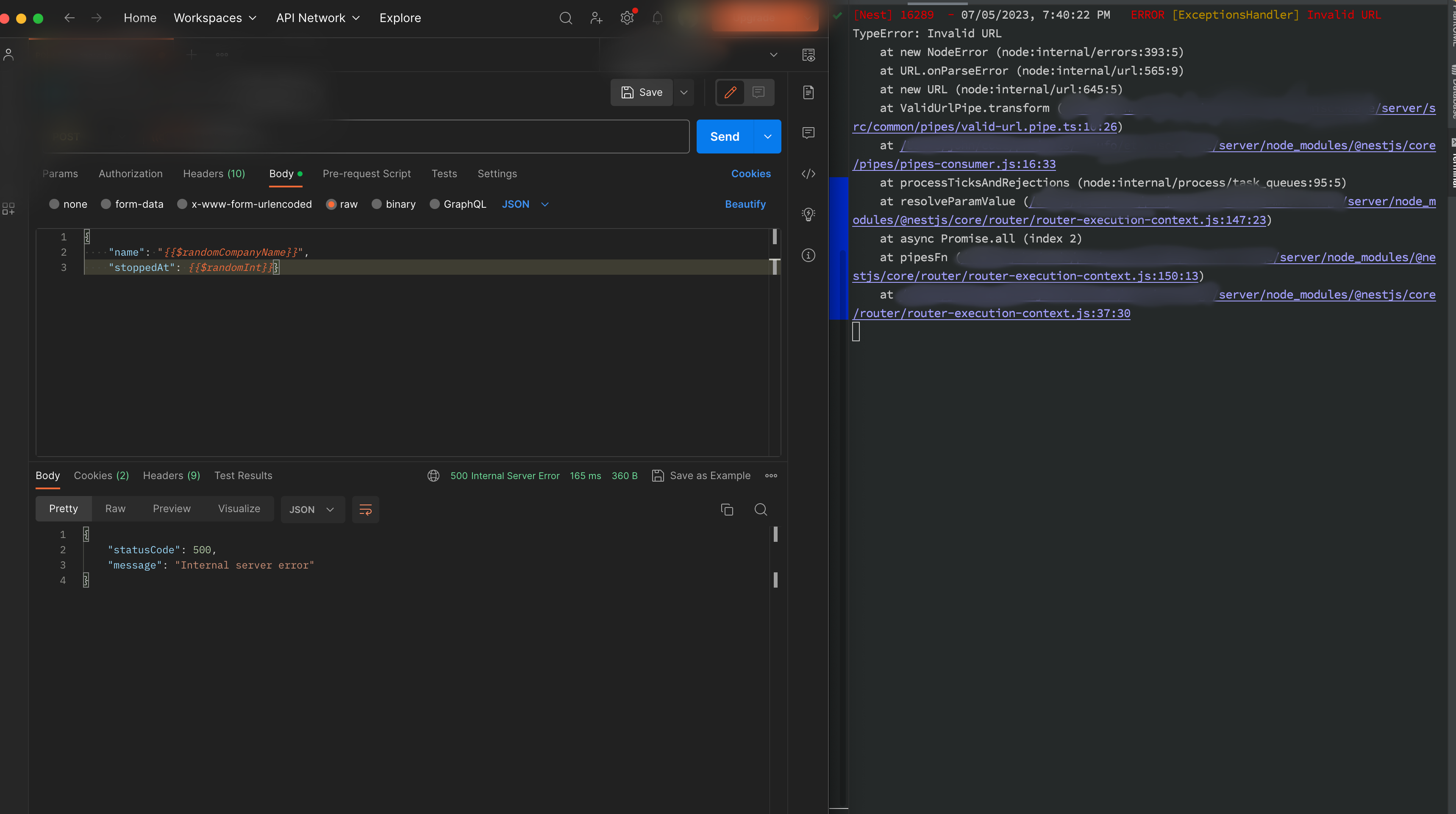I have a nestjs application in which I created a pipe to check if value is a valid URL.
If the URL is invalid, throw error. This is used in a controller to save an item into the database.
I just realized the pipe would just throw 500 with Internal Server Error, I had to check the server log to see if it’s actually from the pipe.
I wonder if there’s a way that we can have http response directly with the message?
The pipe code I have is…
import { BadRequestException, Injectable, PipeTransform } from '@nestjs/common';
@Injectable()
export class ValidUrlPipe implements PipeTransform {
transform(website: string) {
if (website === '') return website;
const validProtocols = ['http:', 'https:'];
const { protocol } = new URL(website);
if (validProtocols.includes(protocol)) {
return website;
}
throw new BadRequestException(`invalid website value: ${website}`);
}
}
the controller using the pipe looks like
@Post()
create(
@Body('website', ValidUrlPipe) website: string,
@Body() createTvDto: CreateTvDto,
@CurrentUser() user: User,
) {
return this.televisionsService.create(user._id, createTvDto);
}
Thank you so much in advance for any suggestions/solutions.
EDIT: added image of the error thrown by using postman to call the endpoint





2
Answers
Your issue is that the
new URL()call is throwing an exception. You can wrap that in atry/catchblock to transform it to the properBadRequestExceptionyou are wanting to throw. Otherwise, I’d probably just use a simple regex/https?:///.test(website)to validate that the passed website is indeed an HTTP or HTTPS website.this line
const { protocol } = new URL(website);will throw an error if thewebsiteparameter is not a valid URL. you could put validation to check if the parameter is a valid URL. it’s better to have a try/ catch block to catch errors and return proper exceptions.